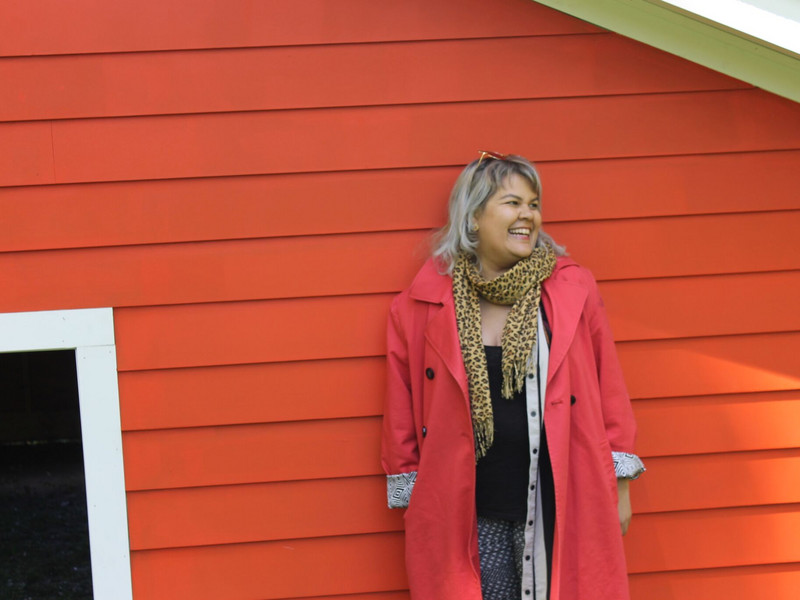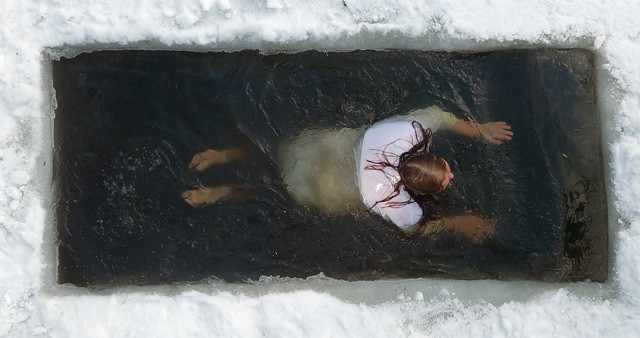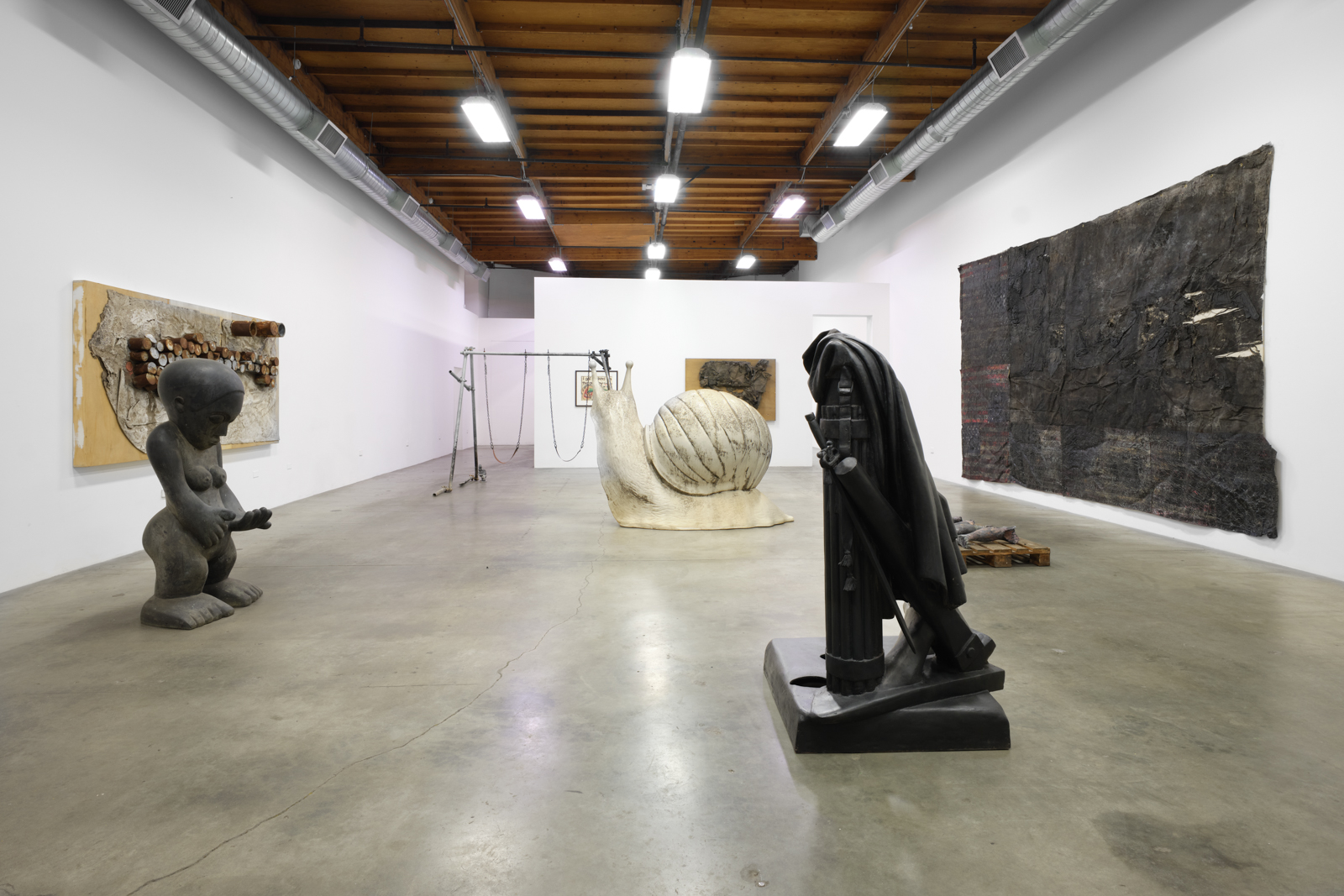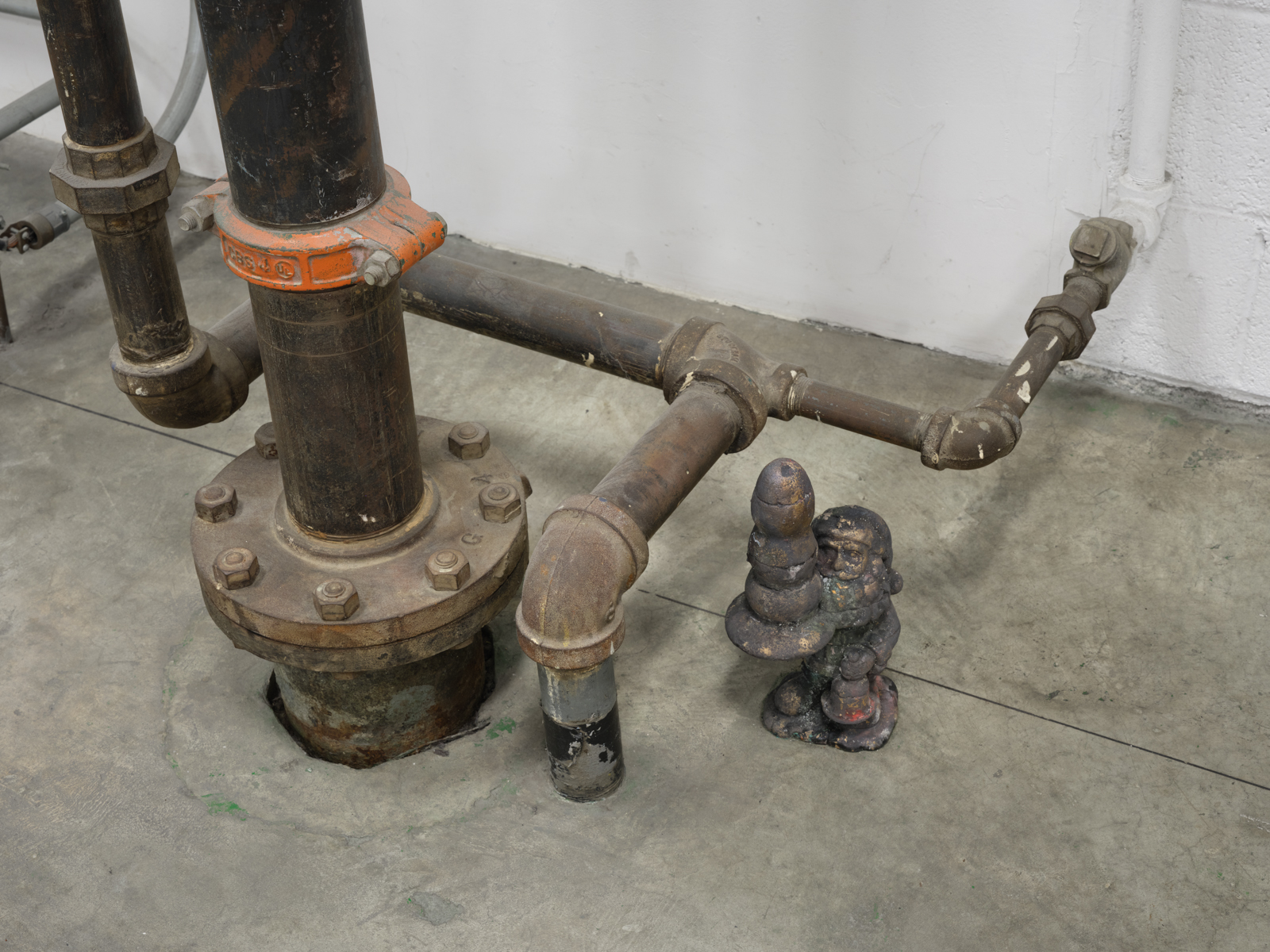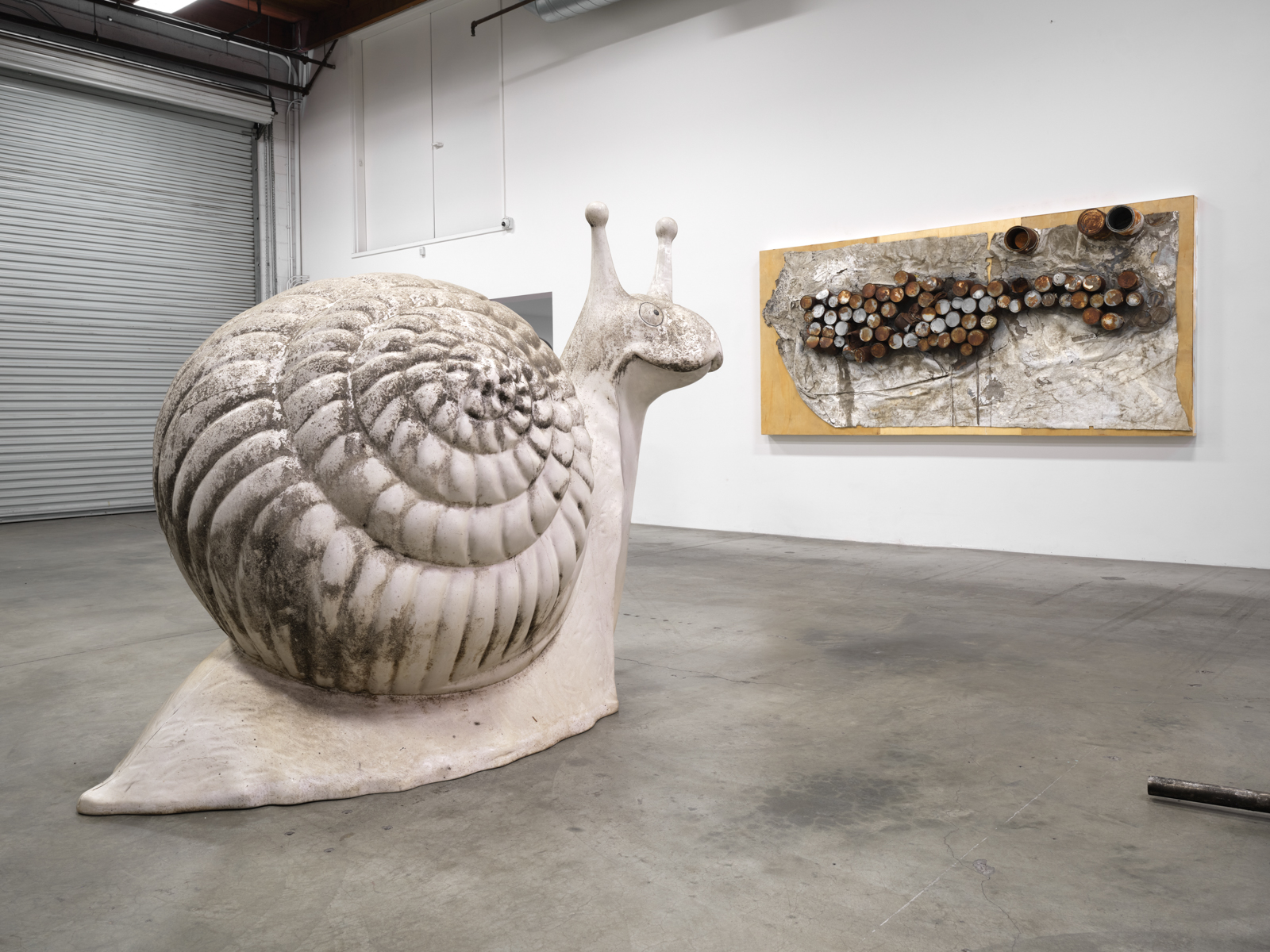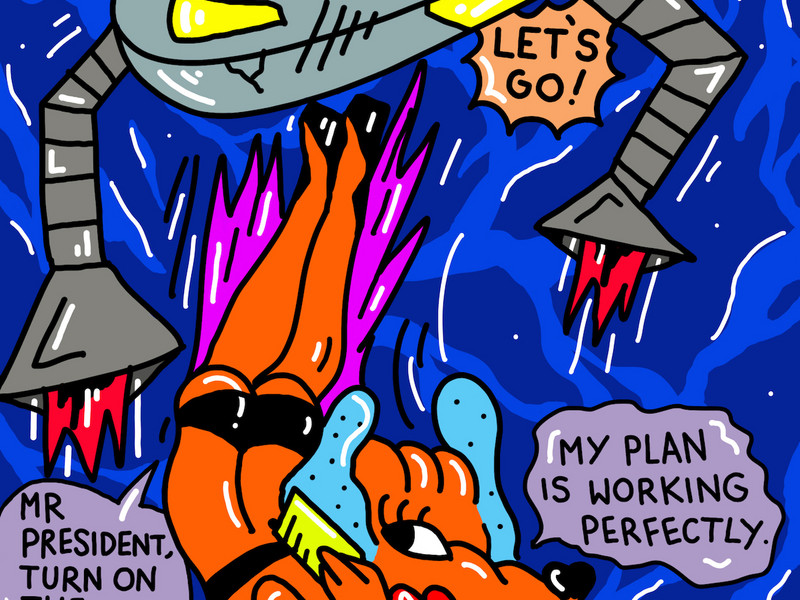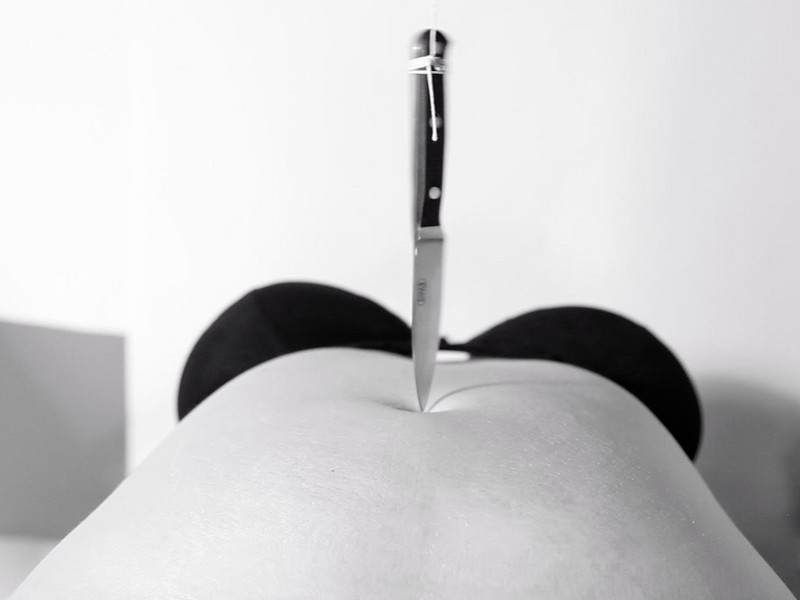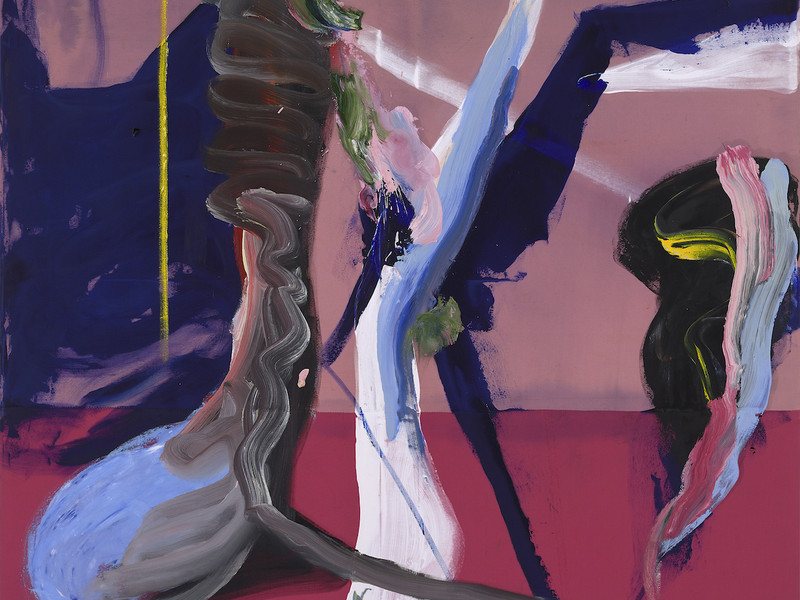Believe It

Growing up in an urban environment, sports and specifically basketball were very important to me in my formative years. In Hank's Branded series, I saw him posing similar questions that I was having about what it meant to be a Black man coming of age in America. Hank has continually returned to images of sports players and the peculiar role they inhabit in the American psyche throughout his practice. His work has continuously examined the complex relationship between sports, capitalism and the Black body, showcasing the glory associated with sports stardom, but also critiquing the power structures at play.
In Hank's Unbranded series, he deconstructs advertisements, showing how our identities as Americans are often shaped by the media and the roles corporations have prescribed to various racial, ethnic and gender groups. Look- ing at his artwork sparked within me a passion for looking beyond the surface, and questioning the purpose of vari- ous institutions, ideas and cultural practices that I previously never considered.
In 2015, I applied for a role in his studio, met Hank, and witnessed the brilliance of his mind and work in person. I was able to see firsthand how his artworks were created and get to know the small but passionate group of collabo- rators who worked with him at the time helping to bring his vision to reality. Working in the studio, I was given the opportunity to participate in a four-person team that toured his public art project, In Search Of the Truth, across 35 states and 43 cities during Donald Trump’s first presidential run. Traveling around the country in a tour bus, engag- ing with Americans from all over, and meeting artists and curators from some of the country's most elite muse- ums opened up a new world of possibilities for me as a creative. It changed the way I perceived myself as a Black man, as an American, and even the way I perceived the concept of ‘truth.’
My connection to Hank's work is much more than just an aesthetic conversation—it’s about the ideas that engag- ing with his work has sparked within me. For me, interviewing Hank for this article is the culmination of a full-circle moment that started when I first read about Hank in that book almost a decade ago, eventually getting to know and work for him, and now being able to write about him, his work and where he hopes to take his practice in the future.


Coat LUAR, pants SUPREME NEW YORK, shoes DENIM TEARS X UGG, sunglasses FLATLIST
EMANN ODUFU—When I think of the evolution of your practice, it is constantly evolving, and you are always reinventing yourself and the type of work you create. Obviously, a framework permeates throughout your practice and your oeuvre. Still, I would like you to speak to your process of reinvention, especially when I look at your work from the late 2000s to now. Is this something that you're thinking about as you create, or does it natu - rally manifest as you change with the times?
HANK WILLIS THOMAS—For me, change is necessary for growth, and as the times are rapidly evolving, I also need to do that. The core of my work is still there, but the methods and mediums that I use to express the import - ant things have had to evolve. Also, who I'm talking to and how I'm speaking to them has changed by demand. I went from talking about brands in the early 2000s to creating brands through projects such as Question Bridge, For Freedoms and Truth Booth. They are all my own take on what a brand does, but what is for sale is different. What is for sale are the complex ideas that are at the core of my work. I am perpetually propelled and inspired by how we can attract and maintain audiences through branding and marketing and how our processes engage them.
EMANN ODUFU—Collaboration is something that is very important to your practice, even harkening back to In Search of the Truth, which was a collaboration between you and three other artists. With For Freedoms, Writ - ing on the Wall, and the Wide Awakes, the work you did took this collaborative aspect to a whole new level. One of your works that comes to mind is from your I am a man series, specifically the piece that says, ‘I am many.’ Especially when working in your studio, I noticed that your work was the product of a village of creatives and collaborators working to capture your vision. What is the importance of collaboration and community in your practice?
HANK WILLIS THOMAS—Everything we do in life is a collaboration because no one lives or works in a vacuum. A lot of the ways in which we talk about our lives are as if we're the only ones affected by whatever we're expe - riencing. So, I've always collaborated with other artists in addition to making my own work, to remind myself and others who I care about—and even people I don't know—that we all have a stake in what each other does. Creativity is an outlet and opportunity for us to think about ourselves, the things we care about and each other differently. EO—From my perspective, that process of collaboration evolved into something even larger with works like For Freedoms and the Wide Awakes, which were these mass collaborations that sparked a national movement. I'm curious to know why you, as an artist, decided to create these works?
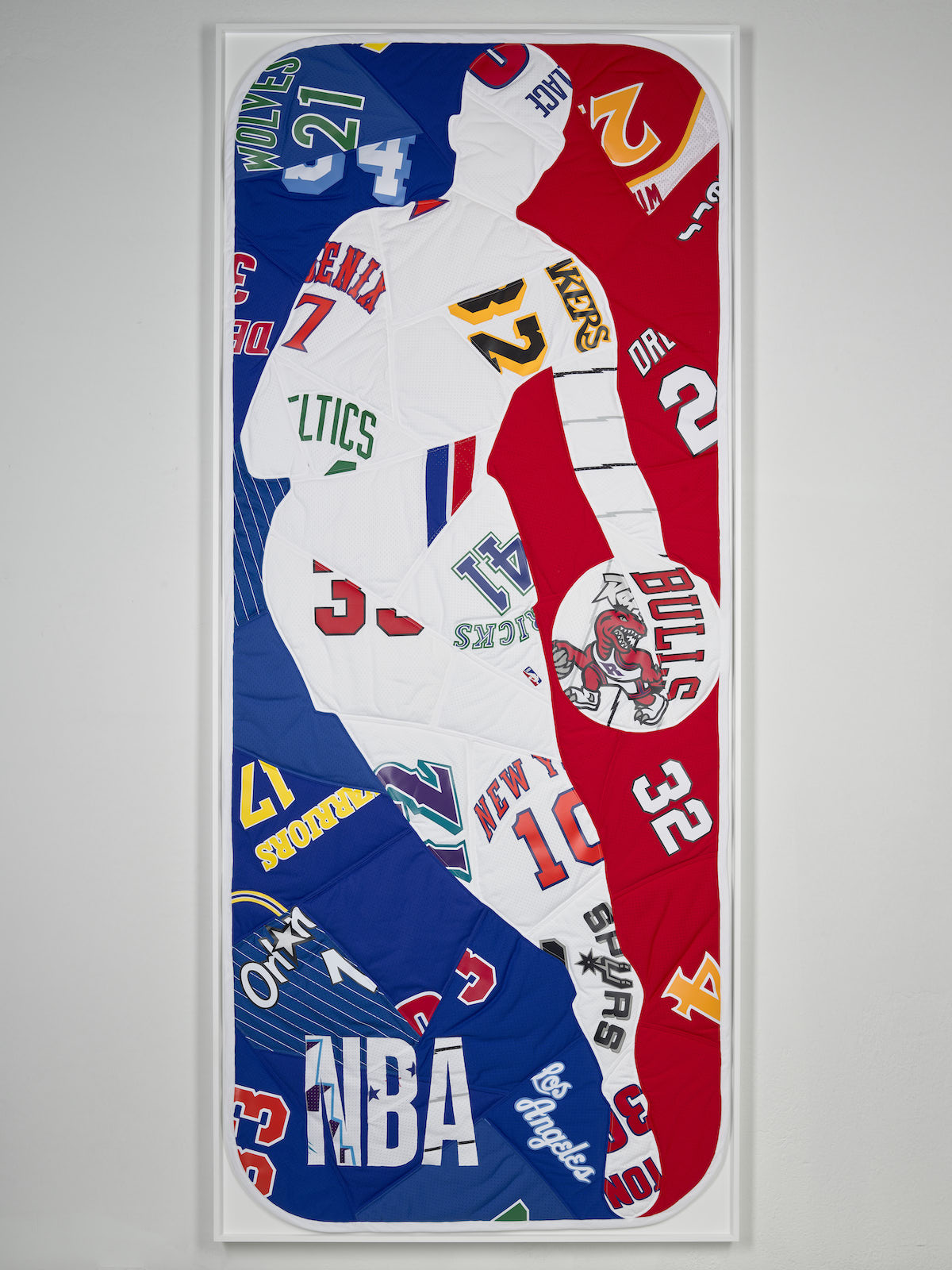

Jacket TELFAR, pants and shoes BALENCIAGA
HWT—For Freedoms and the Wide Awakes were inspired by my desire to work with and celebrate the work of other artists. With For Freedoms, we did activations in exhibi- tion halls and a national billboard campaign that allowed us to engage audiences that none of us individually could reach. We did this by engaging billboards and public space as an artistic medium. The Wide Awakes built on this idea because it is not an organization. Instead, it is a very loose and organic collective. It was a more liberated attempt at doing the same things we were doing with For Freedoms. But there was no centrality to the collab- oration this time, so all the participants were creating it. There's an excitement to that. There's also no barrier to entry or gatekeepers. The only gatekeeper is the person themselves.
EO—How do you balance being a fine artist and being concerned with the formal applications of the creative process with your burgeoning role as an activist, a community builder, and even as a political voice?
HWT—I do that through working with the people in my studio. I'm also collaborating outside of my studio in the streets of the world and on the Internet. The people in my studio help me focus on maintaining and clarifying the messages in my work. That is an aesthetic conver- sation as well as a content conversation.
EO—Well, whatever you're doing, it's working. The seeds that you and your creative team are planting have been harvested to make an impact that stretches outside of just art. You've accomplished a lot in your career so far, and I'm sure there are other mountains to climb. However, at the present moment, top galleries around the globe represent you, and your work is in the collec- tions of esteemed museums and influential collectors. So, what keeps you motivated to go into the studio and keep creating? What’s inspiring you at this moment?
HWT—I read a book in 2019 called Finite and Infinite Games by James Carse, which really helped me to understand my purpose. Carse talks about finite games as being played for the purpose of winning and infinite games as being played for the purpose of continuing the play. A finite game is to be won by someone, and it must come to a definite end. An infinite game is a vision of life as play and possibility. So, I realized that I'm play- ing an infinite game and I am not trying to win. I'm trying to stay in a state of play. We live in a world with the illusion that there is some form of finality, and for me, play- ing an infinite game is continuing to expand and chal- lenge the limitations of the world that you know and the person you are. That's what keeps me going. When we say we're going to take an inflatable speech bubble across the country where strangers would come and share their truths, there's not really any finite rewards. The reward is the journey. The exhibition is an artifact, but the artwork is the actual journey itself.
EO—One thing I'm thinking about consistently is how the creative world has drastically transformed in the past 20 years. In my opinion, there are no boxes—or fewer boxes for creatives—and the lines between creative realms are blurring. Artists are not staying in one lane anymore, and the best example of that is probably Kanye West. He started off making music, and now he's a leader in fashion and breaking into the tech world. Even for you, I see you existing between creative fields and between realms. Can you speak to this changing atmosphere? What opportunities does it bring for a multifaceted creative like yourself?
HWT—The world is constantly changing. I think you're right that the past 20 years have appeared to be radi- cally and rapidly evolving, asking each of us to reeval- uate who we are, what we are, what we do and how we do it. But I don't think that's limited to the creative field. From my experience, it's how we're experiencing gender, how we're experiencing race, how we're experiencing class, even how we’re experiencing nationality. Over the past 20 years, the way we look at things that have been relatively fixed has become much more complicated. I don't separate the way that I live and what I do into work and not work or art and not art. It's all my life. I'm an eclectic person who has a broad range of interests, and this is something that a lot of people of African descent negotiate. We negotiate being multifaceted, complex people and being expected to conform or live within a box already prescribed for us. I don't think that's just people of African descent, but I think that the pressure of the box feels more confining for many of us in this country. So, for me and I imagine many others, excelling outside of the place where we first gained ‘validity’ is a way of finding some form of liberation or emancipation.
EO—I really dig that answer. I want to delve into your recent exhibition, The New Black Aesthetic. We've talked a little bit about this before, but throughout your practice, you often return to images of sports players, examining the complex relationship between the sports industry and Black men. In some of my favorite works of yours, especially the older pieces, you made powerful critiques on the sports industry. Your Liberty sculpture almost presents a different perspective when you look at it—it's more of an uplifting or aspirational type of feeling that I get from looking at it. On one end, you're celebrating the upward mobility created through these athletes' ascent into superstardom. On the other end, we see a critique of the power structures that permeate them. Can you speak to this duality and the nuanced way you enjoy and participate in the spectacle of sports, or I guess any system, while also understanding some of the deeper implications?
HWT—This question makes me think of Guy Debord's book, The Society of Spectacle. In it, he describes the spectacle or what we would call the modern-day media machine as an instrument to distract and pacify the masses and basically keep the wheels of consumerism turning. This process alters our view of reality and turns everything into a commodity. It encourages us to focus on appearances and symbols rather than genu- ine human interaction. Carce says ‘the spectacle is not a collection of images rather, it is a social relation among people, mediated by images.’ [Debord’s] book is a multi- faceted and shifting gaze on the spectacle and spec- tator. It embodies some of my thoughts in a lifelong process of finding myself in relation to the spectacle of sports and the NBA and any other spectacle in which I might be participating. In my work, I'm engaging in this conversation, acknowledging the allure of the spectacle and breaking down these symbols and images to help the viewer and myself make sense of what you called ‘the deeper implications.’
EO—When I applied for a role in your studio years ago, I remember stating that I saw you as the ‘Black Rich- ard Prince’ in my cover letter. I'm not sure if you read the cover letters or if someone else read them...
HWT—No, I read the cover letters.
EO—I like to think that was part of the reason why you guys were like, ‘Okay, we'll give him a shot.’ Obviously, you and Richard Prince have entirely different practices. Still, I think I was speaking to the ability you just referenced to take images and symbols that are recognizable in our society, deconstructing them in a way that questions the way our world operates. I view you as a social psycholo- gist and even a cultural healer. In a hundred years, when we look back at your practice, what impact do you want it to have on people on a social and psychological level?
HWT—Isn't it enough to just be remembered? That's my answer to that question, but I can expand on it.
EO—I would absolutely love for you to expand on it!
HWT—One hundred years from now, will there even be a world as we know it, based on the catastrophic forecasts we are learning about? I want people to be alive, safe and healthy in a society where the work that I/we make is still relevant. If those circumstances exist, I would hope they are somewhat proud of who we are and what we have done. Think about it: this generation knows that the world is overpopulated and that our lifestyles are creat ing irreparable harm to all future societies. This gener ation has had more privilege than any other generation of human beings collectively, yet has not overcome the desire to kill and maim other human beings and has even eradicated other species. I just hope that people in a hundred years will have mercy for us because, yes, differ ent generations might have caused a lot of harm, but they did not know what we know. So, when I think about my work, which is my life, I would love for future genera tions to think that I cared about them... But it would also be enough just to be remembered.

